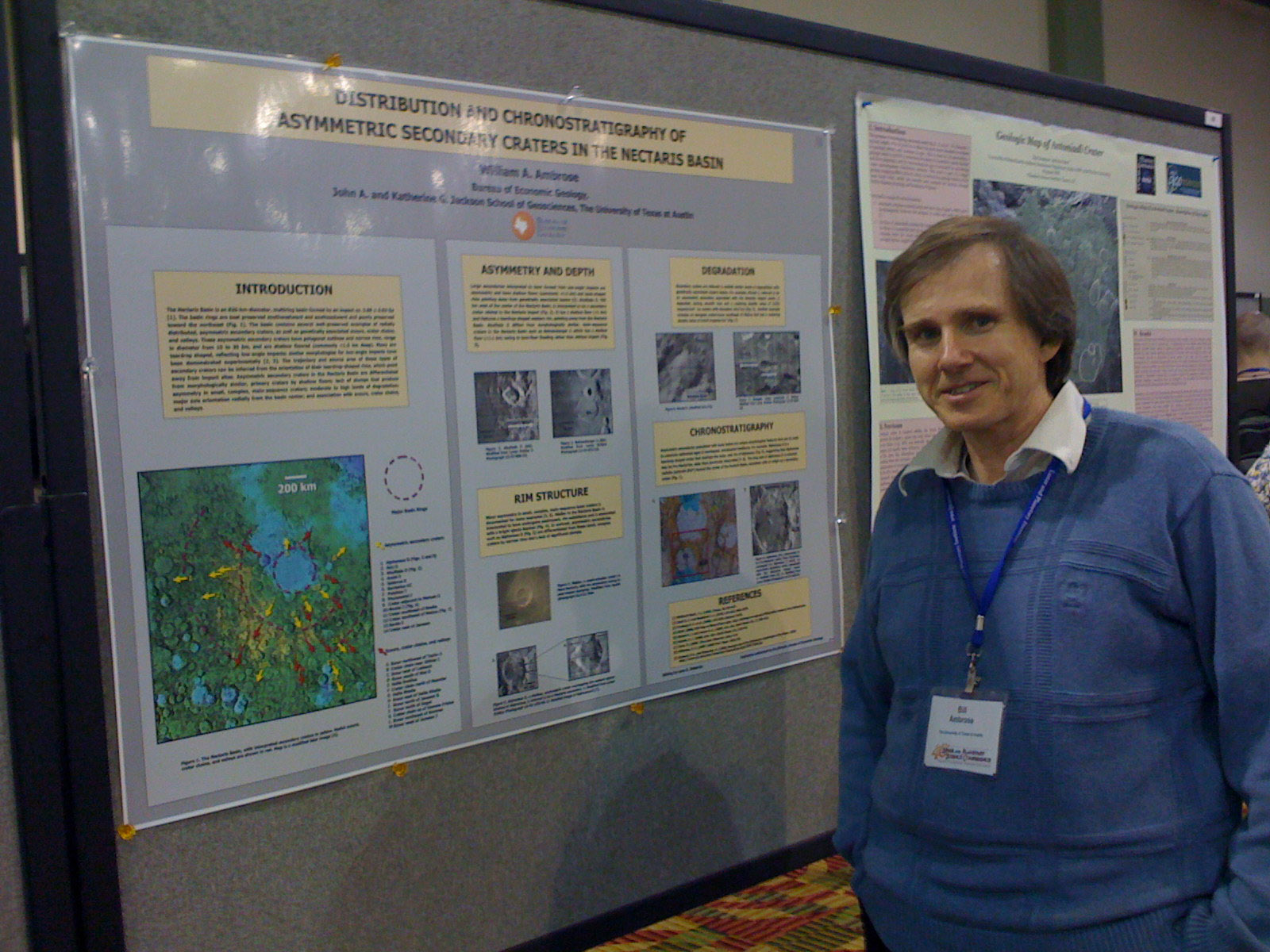Difference between revisions of "March 25, 2009"
| Line 1: | Line 1: | ||
__NOTOC__ | __NOTOC__ | ||
=Live From Houston, It's Lpsc 40!= | =Live From Houston, It's Lpsc 40!= | ||
| − | |||
<!-- ws:start:WikiTextHeadingRule:2:<h1> --> | <!-- ws:start:WikiTextHeadingRule:2:<h1> --> | ||
<!-- ws:start:WikiTextLocalImageRule:8:<img src="/file/view/LPOD-Mar25-09.jpg/64449576/LPOD-Mar25-09.jpg" alt="" title="" style="width: 800px;" /> -->[[File:LPOD-Mar25-09.jpg|LPOD-Mar25-09.jpg]]<!-- ws:end:WikiTextLocalImageRule:8 --><br /> | <!-- ws:start:WikiTextLocalImageRule:8:<img src="/file/view/LPOD-Mar25-09.jpg/64449576/LPOD-Mar25-09.jpg" alt="" title="" style="width: 800px;" /> -->[[File:LPOD-Mar25-09.jpg|LPOD-Mar25-09.jpg]]<!-- ws:end:WikiTextLocalImageRule:8 --><br /> | ||
<em>image by Chuck Wood</em><br /> | <em>image by Chuck Wood</em><br /> | ||
<br /> | <br /> | ||
| − | Attending the Lunar & Planetary Science Conference is always a treat because of the [http://www.lpi.usra.edu/meetings/lpsc2009/pdf/program.pdf new science] presented and the chance to meet old and new friends. This is the 40th conference - the first followed soon after the Apollo 11 astronauts brought kilograms of lunar samples to Earth - and I have been lucky to participate in 34 of them. LPOD has been mentioned to me by a number of attendees, most surprisingly when a stranger sitting next to me said that he had read something a speaker had just said in LPOD! I was startled and showed him my badge with my name, and he was startled too! Another LPOD reader is Bill Ambrose, pictured above, a professional geologist at the University of Texas who read an article that Mardi Clark, a LPOD contributor and reader, had written in <em>The Lunar Observer</em> about asymmetrical secondary craters. He extended Mardi's good work by mapping the distribution of such craters around the Nectaris Basin and presented his [http://www.lpi.usra.edu/meetings/lpsc2009/pdf/1015.pdf work] at this prestigious professional conference. This is a nice example of amateur work influencing professional scientists. Great work, LPODites!<br /> | + | Attending the Lunar & Planetary Science Conference is always a treat because of the [http://www.lpi.usra.edu/meetings/lpsc2009/pdf/program.pdf" rel="nofollow new science] presented and the chance to meet old and new friends. This is the 40th conference - the first followed soon after the Apollo 11 astronauts brought kilograms of lunar samples to Earth - and I have been lucky to participate in 34 of them. LPOD has been mentioned to me by a number of attendees, most surprisingly when a stranger sitting next to me said that he had read something a speaker had just said in LPOD! I was startled and showed him my badge with my name, and he was startled too! Another LPOD reader is Bill Ambrose, pictured above, a professional geologist at the University of Texas who read an article that Mardi Clark, a LPOD contributor and reader, had written in <em>The Lunar Observer</em> about asymmetrical secondary craters. He extended Mardi's good work by mapping the distribution of such craters around the Nectaris Basin and presented his [http://www.lpi.usra.edu/meetings/lpsc2009/pdf/1015.pdf" rel="nofollow work] at this prestigious professional conference. This is a nice example of amateur work influencing professional scientists. Great work, LPODites!<br /> |
<br /> | <br /> | ||
| − | <em>[mailto:tychocrater@yahoo.com Chuck Wood]</em><br /> | + | <em>[mailto:tychocrater@yahoo.com" rel="nofollow Chuck Wood]</em><br /> |
<br /> | <br /> | ||
<hr /> | <hr /> | ||
Revision as of 18:06, 4 January 2015
Live From Houston, It's Lpsc 40!

image by Chuck Wood
Attending the Lunar & Planetary Science Conference is always a treat because of the " rel="nofollow new science presented and the chance to meet old and new friends. This is the 40th conference - the first followed soon after the Apollo 11 astronauts brought kilograms of lunar samples to Earth - and I have been lucky to participate in 34 of them. LPOD has been mentioned to me by a number of attendees, most surprisingly when a stranger sitting next to me said that he had read something a speaker had just said in LPOD! I was startled and showed him my badge with my name, and he was startled too! Another LPOD reader is Bill Ambrose, pictured above, a professional geologist at the University of Texas who read an article that Mardi Clark, a LPOD contributor and reader, had written in The Lunar Observer about asymmetrical secondary craters. He extended Mardi's good work by mapping the distribution of such craters around the Nectaris Basin and presented his " rel="nofollow work at this prestigious professional conference. This is a nice example of amateur work influencing professional scientists. Great work, LPODites!
" rel="nofollow Chuck Wood



